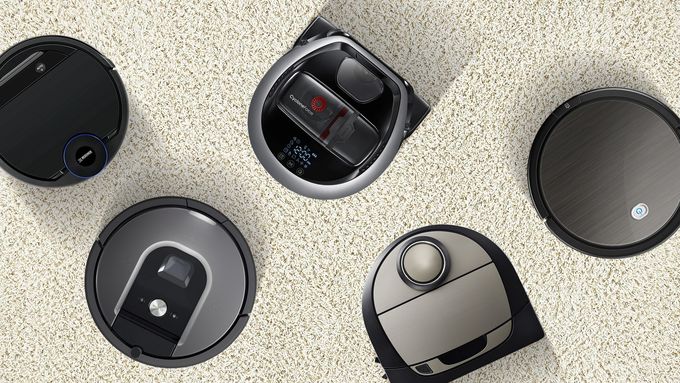The appearance of robotic vacuums was the result of the rapid development of digital technology at the beginning of this century. These vacuums have gained popularity on the market in less than two decades. Today they successfully compete with traditional canister vacuums, wet / dry vacuums and upright vacuums.
The first Roomba model from American iRobot Company appeared in September 2002. This vacuum was a huge success despite some problems. Effective automatic cleaning required engineers to solve tasks such as navigation in the room, calculating the optimal trajectory, recharging the battery, overcoming thresholds and other obstacles, protecting against falling from the stairs, localizing the cleaning zone, etc.
Engineers perfectly coped with these problems, creating a complex highly efficient device. Modern models provide fully automatic operation, including scheduled cleaning and control via WiFi.
Today, the segment of robotic vacuums is developing much faster than traditional models. The quality of the navigation system and automatic recharging, the functions of wet wiping and remote control, including WiFi are improved very quickly, increasing the competitiveness of these models.
Today, American iRobot and Neato Robotics, Chinese Ecovacs and iLife are the most active in the market. Of course, many other companies also develop and produce such vacuums. But most of the model line belongs to these four companies.
These models are usually made in the form of a circular disk.
But many companies are experimenting in this direction, developing models whose shape is not strictly round. This slightly reduces the maneuverability of the vacuum, but increases the cleaning efficiency in the corners.
Main pros
This list contains following aspects:
– fully automated cleaning.
Modern models use effective navigation, automatic recharging with the continuation of cleaning from the breakpoint, have automatic emptying of the garbage container, automatic speed control, etc. Some models support control via WiFi.
– cleaning area.
This function is designed to restrict the cleaning zone that is very convenient in many cases. For example, it is used to protect against a collision of a robot with a floor vase or dishes for pets. This option use virtual walls with IR beam.
Some models use a special magnetic tape that is located on the floor.
– cleaning the hard-to-reach places.
Low height provides the effective cleaning under couches, cabinets and other furniture. But the height of some fairly powerful models limits this possibility.
– low noise level.
Most models work almost silently.
– wet mopping.
This function is implemented in some of the latest models. It uses fibre cloth that is attached to the bottom surface with a Velcro.
The work of such a vacuum is perfectly illustrated in the video at the end.
Unfortunately, robotic models have drawbacks.
Main cons
This list contains following factors:
– high price.
A cost of robotic vacuums 2-3 times exceeds the price of traditional models.
– small capacity of the dust container.
Some models of the upper price segment provide automatic emptying of the dust container.
– low suction power.
Robotic vacuum is not effective for cleaning carpets with long pile.
– short operation time without recharging.
This value is usually 90-100 minutes. Recharging lasts up to 2 hours. This function is carried out in an automatic mode. The movement of the robot to the Charging Base is controlled by the IR beam.
– HEPA-filtration significantly reduces the device suction power.
Of course, all these features should be taken into account when choosing the optimum vacuum.
